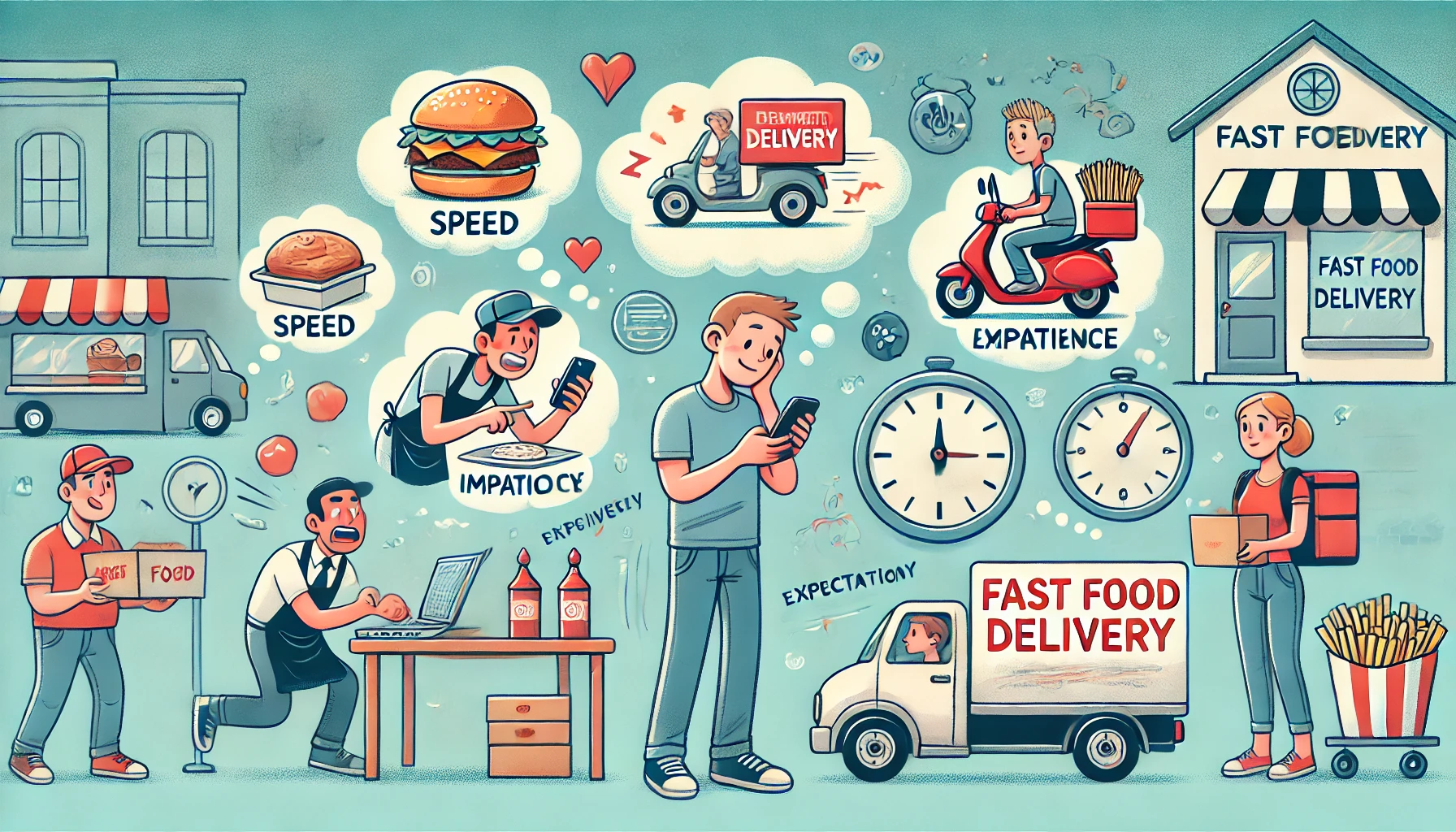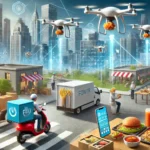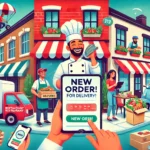Fast food delivery has become an integral part of modern life. The convenience, speed, and accessibility of food-on-demand have reshaped the way we eat, with more customers turning to delivery services than ever before. But what drives consumer behaviour in this space? What psychological factors influence expectations, and how can businesses ensure they meet them?
Understanding the psychology behind fast food delivery is crucial for restaurants, delivery platforms, and couriers alike. Customers expect more than just food; they anticipate a seamless experience, from ordering to delivery. This blog post delves into what customers expect from fast food delivery, exploring psychological triggers, consumer preferences, and the role of technology in shaping modern food delivery expectations.
1. The Need for Instant Gratification
One of the biggest psychological drivers behind fast food delivery is the human craving for instant gratification. In a world where information, entertainment, and shopping are accessible with a tap, food delivery is expected to follow suit. Customers don’t just want food; they want it fast.
How Restaurants and Delivery Services Can Meet This Expectation:
- Speed Optimisation: Ensure delivery times are as quick as possible by streamlining kitchen operations and dispatching drivers efficiently.
- Real-Time Updates: Use tracking features to keep customers informed, reducing anxiety around when their food will arrive.
- Time Guarantees: Offering a “delivered in 30 minutes or your next order is discounted” guarantee creates a perception of reliability and urgency.
The Psychological Impact:
When customers receive their food quickly, dopamine is released in the brain, reinforcing a positive association with the service. Delays, on the other hand, cause frustration, increasing the likelihood of negative reviews and lost future business.
2. Trust and Reliability: The Backbone of Customer Loyalty
Customers expect consistency. If they order from a particular brand or platform, they assume their experience will be the same every time. Trust is built on reliability, and even one bad experience can significantly impact customer perception.
How to Build Trust in Fast Food Delivery:
- Consistency in Quality and Timing: Ensure food is prepared and delivered to the same high standard each time.
- Transparent Communication: If delays occur, inform customers proactively with accurate ETAs.
- Safe and Secure Transactions: Providing secure payment gateways and respecting customer data builds confidence.
The Psychological Impact:
Trust is built over time but can be lost in seconds. Positive past experiences create a sense of psychological security, encouraging repeat orders. Conversely, a single breach of trust (cold food, missing items, or incorrect orders) can deter customers from returning.
3. The Role of Personalisation in Customer Satisfaction
Personalisation is a growing expectation in fast food delivery. Customers appreciate when businesses cater to their specific preferences, making them feel valued and understood.
Ways to Personalise the Experience:
- Tailored Recommendations: Use AI-driven insights to suggest meals based on order history.
- Customisation Options: Allow customers to tweak orders (e.g., extra sauce, removing allergens, choosing portion sizes).
- Loyalty Programmes: Offering rewards based on past purchases reinforces a sense of exclusivity and belonging.
The Psychological Impact:
Personalisation taps into the psychological principle of reciprocity. When customers feel a business understands their preferences, they are more likely to remain loyal and even recommend the service to others.
4. The Importance of Presentation and Packaging
First impressions matter, even in food delivery. Customers expect their meal to arrive looking appetising, not as though it has been thrown together carelessly.
How to Improve Food Presentation in Delivery:
- Invest in High-Quality Packaging: Use packaging that keeps food warm, prevents spills, and enhances the visual appeal.
- Branded Packaging: Consistent branding reinforces identity and builds a sense of familiarity.
- Eco-Friendly Materials: With sustainability becoming a major concern, customers appreciate compostable or recyclable packaging.
The Psychological Impact:
Attractive presentation enhances the anticipation and enjoyment of food. A well-packaged meal feels premium, while sloppy packaging can make customers question food hygiene and quality.
5. Convenience: The Key Driver of Delivery Demand
The core reason people order fast food delivery is convenience. The entire process—from browsing the menu to placing an order—should be effortless.
How to Maximise Convenience:
- User-Friendly App and Website: Ensure intuitive navigation and a seamless ordering process.
- Multiple Payment Options: Accept credit/debit cards, digital wallets, and cash-on-delivery where possible.
- Scheduled Deliveries: Allow customers to pre-order for later, making meal planning easier.
The Psychological Impact:
Convenience reduces decision fatigue. If ordering is easy, customers are more likely to repeat the behaviour, leading to increased sales and brand loyalty.
6. Customer Service: A Make-or-Break Factor
Even with the best technology and logistics, problems can arise. How businesses handle complaints, queries, or feedback can make all the difference.
Key Aspects of Great Customer Service in Food Delivery:
- Quick Response Times: Address complaints swiftly to prevent frustration from escalating.
- Politeness and Professionalism: Couriers and support staff should be trained in handling customers with empathy.
- Fair Resolutions: Offering refunds, replacements, or vouchers can turn a bad experience into a positive one.
The Psychological Impact:
Great customer service fosters emotional loyalty. When customers feel heard and valued, they are more likely to forgive occasional mistakes and continue ordering.
7. The Role of Reviews and Social Proof
Customers trust other customers. Online reviews, ratings, and word-of-mouth recommendations heavily influence where and what people order.
How to Encourage Positive Reviews:
- Deliver Beyond Expectations: Surprise customers with exceptional service or occasional discounts.
- Engage with Customers: Respond to reviews, showing appreciation for positive feedback and addressing complaints constructively.
- Leverage User-Generated Content: Encourage customers to share photos or videos of their meals on social media.
The Psychological Impact:
Positive social proof reduces perceived risk. Seeing others enjoy a service reassures potential customers that they are making the right choice.
Conclusion
The psychology of fast food delivery is rooted in human expectations for speed, reliability, personalisation, presentation, convenience, customer service, and social proof. Businesses that understand and cater to these psychological triggers will gain a competitive edge, fostering loyalty and long-term success.
For food delivery businesses, meeting these expectations isn’t just about serving meals—it’s about creating a seamless, enjoyable, and reliable experience that customers trust and return to time and again. By refining operations, leveraging technology, and prioritising customer satisfaction, restaurants and delivery platforms can thrive in the ever-growing world of food delivery.


